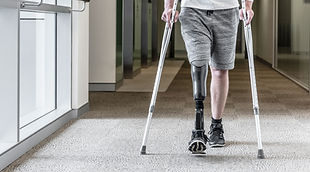

Fractures
Home Physio specializes in diagnosing and carefully treating Fractures while making sure each patient is fully informed throughout the process. Serving the Central, West & North London , Home Physio is known for delivering outstanding results while helping you minimize your personal investment and creating a suitable treatment plan for your needs.
Home / Conditions / Fractures

What is a fracture?
A fracture is a break in a bone which disrupts its continuity. There are many different types of fractures:
-
Open/compound: the bone breaks the surface of the skin
-
Closed/simple: the surface of the skin is not broken
-
Stable: a single fracture of the pelvis
-
Unstable: the pelvis has fractured in more than one place
-
Transverse: directly across the bone
-
Oblique: a fracture at an angle
-
Spiral: a twisting fracture
-
Comminuted: the bone is broken into many pieces
-
Greenstick: found in young children when the bone bends on one side and breaks on the other
-
Simple: a single fracture
-
Complicated: other structures like blood vessels are also damaged

How are fractures treated?
The broken bone needs to be realigned (reduction). This can be done either through surgery (open reduction) or by force (closed reduction). Surgery involves fixation (internal or external) is used for unstable and complicated fractures. Closed reduction techniques are known as conservative treatments and are applied to stable and simple fractures.
Open Reduction
-
Internal fixation (ORIF) using steel screws, rod, plates, pins or K-wires to hold the broken bones in the correct position.
-
External Fixation which attaches a metal framework outside the limb and include the Llizarov method and an X-frame
Closed Reduction
-
Conservative treatments (non surgical management)
-
Closed reduction by hand
-
Reduction under anaesthetic
-
Traction which pulls the area into the correct place
As the bone is healing it must be immobilised and kept in the correct position. Immobilisation methods include:
-
Surgical fixation (internal or external)
-
A cast made from Plaster of Paris, plastic or resin
-
Slings; triangular bandage, collar and cuff, high sling
-
Splint
-
Air cast boot

What does fracture physiotherapy include?
Physiotherapy should start immediately after the fracture has been immobilised. Physiotherapy during fracture healing will concentrate on:
-
Promoting healing
-
Encouraging weight bearing
-
Maintaining strength of weakened muscles
-
Maintaining range of movement of the affected and surrounding joints
-
Reducing pain
-
Reducing swelling
After your fracture has healed and/or your cast has been removed physiotherapy is continued for 3-12 months or until you have regained your full level of function. The aims of physiotherapy are to:
-
Progress weight bearing activities
-
Return to full function
-
Return strength and full range of movement to muscles / joints
-
Focus on sport-specific rehabilitation
-
Optimise the range of movement at the affected joint
_edited.png)





